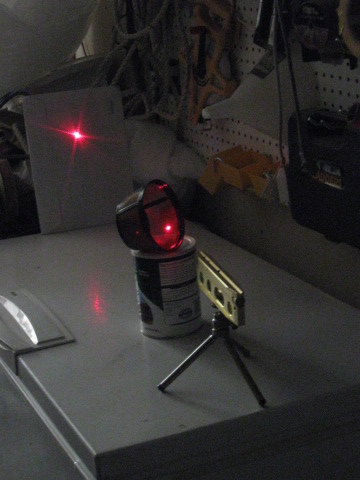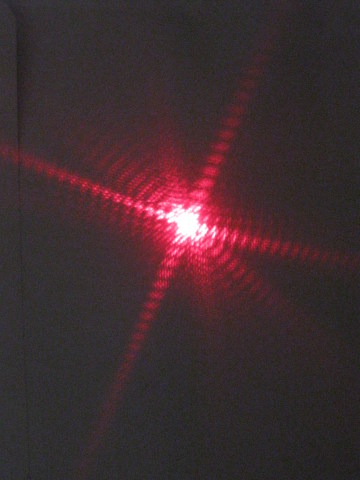When I first did the two slit experiment in high school lasers were a little hard to come by. So we had to use a gas tube energized with a clumsy high voltage contraption you wouldn't let anywhere near high school students today. Our physics teacher said not to touch the machine when it was on; otherwise we might electrocute ourselves. Teenaged boys love dangerous stuff especially when they break the rules and don't die. (Yes, that thing could give a ferocious zap!)
Now high schools use laser diodes in those rare classes where they actually do hands-on stuff, which sorta takes the fun out of it. But I'm sure the kids shine lasers into their eyes because they are told not to.
Anyways, one slit is easy enough to whip up at home, and you will get a nice pattern with one slit, or even with the edge of a razor blade, so it's not that definitive to say, okay, this is the difference between one slit and two unless you know what to expect. Tracking the path of a single photon, or electron, or any other particle takes some fancy equipment, so you you usually have to settle with huge numbers of photons or electrons and discern their individual behavior from their collective behavior.
Nevertheless you can demonstrate some weird, non-intuitive quantum effects without going to the trouble of making two very fine slits.
I just put together this contraption on the freezer in my garage using a laser level I picked up at Harbor Freight for six bucks, a fine mesh reusable coffee filter, and a bit of junk mail:

This is the pattern I got:

You might think this pattern makes sense, that it's somehow the shadow of the coffee filter screen, but then when you start moving the screen around you'll see that it doesn't behave like a shadow at all...
In the two slit experiment you get something similar. With one slit you get a single bright band with a few lesser bands around it where a few photons interact with the edge of the slit in wavelike manner, but the bulk of them go through the single slit in a particle-like manner. But with two slits you get a mess of brighter bands with an interference pattern that implies many more photons are interacting with the slits as waves than would reasonably be expected from the results of the one slit experiment.
In the coffee filter experiment the photons are passing through multiple holes as if they are waves.
For further research I liked this guys web site, mostly because he has Spock on his home page and claims to be a Marxist:
http://abyss.uoregon.edu/~js/21st_century_science/lectures/lec13.html